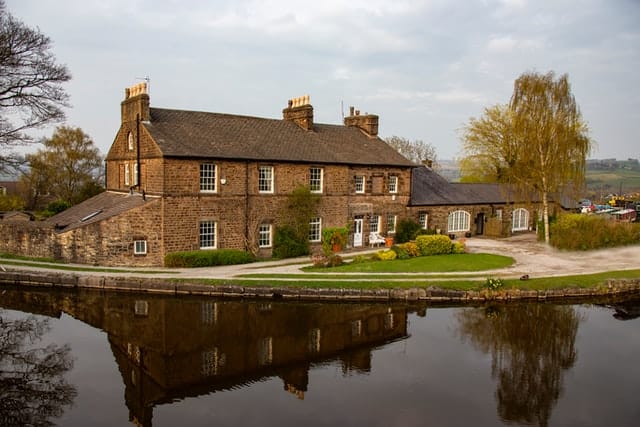
Damp and Timber Report
Everything You Need to Know About Timber Decay in a Property
If you own an older property, you probably don’t want to learn it is affected by timber decay. Discovering that the woodwork in your property is being damaged by wet or dry rot or insects is never good news for any homeowner. There are many drastic measures that you might consider taking to restore your home to its former condition, but heavy-duty chemical treatments, preservatives, and insecticides are not always the best option. Before you spend your money on these treatments, it may be worth having a specialist timber survey carried out to make sure that the problems in your property are correctly diagnosed and the most reasonable and effective solution is suggested. In the long term, this often works out cheaper compared to ‘quick fixes’ and can save a lot of unnecessary repair work on your home.
What Causes Damp and Timber Decay?
Timber decay is often a result of damp that has been left untreated for a long time. This can lead to various problems, including wet rot, which is one of the most common causes of timber decay in homes.
What is Wet Rot?
Wet rot occurs when damp becomes embedded in the woodwork over time. Lack of ventilation will only serve to accelerate the wet rot further, and any areas of your home that are suffering from standing water will also be affected. Floorboards that are embedded in damp walls, the inside and outside of window ledges, and window frames are some of the more high-risk areas of a property, especially during the colder months.
Often, wet rot in woodwork is a localised issue that can be reversed by reducing the moisture levels. Affected wood can then be treated with a specialist resin to restore hardness. In instances of stubborn wet rot, the affected area might need to be cut out and a new piece spliced in, however, this is only typically done in very severe cases of wet rot that pose a risk to the structure of the property.
What is Dry Rot?
Dry rot, which is caused by the serpula lacrymans fungus, is a much more serious problem that can lead to timber decay in the home. Airborne fungus spores settle on damp timbers in the building, sucking the moisture out of the wood until it is crumbling and dry. You can sometimes identify dry rot in the early stages by looking for wood or painted timber that has a square-shaped pattern of cracks. There may be grey, web-like roots spread across the surface that will eventually grow and emit more spores into the air.
If it is identified and dealt with quickly, localised dry rot is not always a huge job to deal with. However, it must be caught in the early stages since it has a strong ability to spread through a property and quickly escalate. Rectifying the source of damp on the timber should prevent the fungus from germinating, so good ventilation in rooms is key.
What is a Damp and Timber Report?
A damp and timber report is a survey that is carried out to check for damp problems that may potentially be found before purchasing a property. This survey also involves the surveyor checking for various timber issues including woodworm or wood beetle infestations and dry rot. It is one of the most common specialist requests for older buildings and is recommended as part of the home buying process. Many mortgage lenders will request that a damp and timber report is carried out on an older home before agreeing to lend money against the property.
What Does a Damp and Timber Survey Involve?
A damp and timber survey tells you if the structure of the building is being affected by excessive damp problems, wood-boring insects or fungi that will rot the wood and attack the walls and timber within the property.
A damp and timber survey is carried out by a qualified expert to spot potential problems with damp and/or timber infestations in a property and ensure that any issues are correctly diagnosed. The surveyor will inspect the exterior of the property and identify any potential defects that could lead to timber decay or damp ingress in the future, all the way from the chimney stack to the existing ground levels and the building’s subfloor ventilation.
What Does a Damp and Timber Specialist Look For?
Your surveyor will establish whether the property already has an existing damp proof course and if so, what type. They will also look for high ground levels that may lead to the DPC bridging and potentially lead to damp on the ground floor walls and decay in adjacent timber. Internally, they will look at the ground floor walls for any signs of dampness and where possible, pull back flooring and carpets to examine the timbers underneath. Floorboards may also be lifted with permission from the homeowner to examine the condition of the timbers and the subfloor void.
On the first floor of the property, the timbers will be examined for any signs of fungal decay or wood-boring beetle infestations. Again, carpets and floorboards will be pulled back wherever this is possible to check the floorboards and the voids and timbers underneath. The surveyor will also check the roof void or loft space for any signs of fungal decay, damp, or wood beetles.
The Damp and Timber Report:
Once the survey is complete, the surveyor will put together a full written report and a sketch plan where necessary. This will provide details on any areas where damp proofing, dry rot treatments, or woodworm treatments will need to be carried out. The surveyor will also be able to answer any additional questions that you may have about specific areas of the report and may be able to recommend corrective action.
How Much Does a Damp and Timber Report Cost?
The cost of having a damp and timber survey carried out on a property will depend on a number of different factors, including the type of issues that are found in the property and the severity of the damage that it has resulted in. Your damp and timber report cost may also vary depending on the size, type, and area of the property along with other factors, including if it is a listed building.
Damp Proofing Timber Treatment Options:
While timber is a very versatile and sturdy material that is often used in the construction of homes, it can be very vulnerable to damp, wet rot, dry rot, and wood-boring insects. However, if you want to prevent these issues from occurring in your home, there are various damp-proofing timber treatments and other coatings that you can use.
Damp Proof Paint:
Applying damp proof paint is a simple yet effective way to protect timber against extra moisture. These paints can usually be purchased at any good hardware store and are simply brushed onto the surface, where they provide a waterproof barrier.
Wet Rot Treatments:
While damp-proof coatings will limit the risk of developing wet rot in timber, there are several treatments that can be applied after wet rot has affected the area in most cases. To use these treatments, you will need to make sure that the moisture has been allowed to completely dry and that the area is free from damp in order for them to work effectively. A specialised resin is most commonly used to re-strengthen the wood after suffering from wet rot.
Hire a Timber Treatment Contractor – The Best Way to Prevent Issues:
Sadly, homeowners who are not experienced with timber treatments can often end up causing more harm than good when trying to treat affected areas of their home alone. The best way to completely identify any issues of damp and timber decay in your property is through a damp and timber survey, which will outline any affected areas and provide you with more information on the next steps to take. Although this survey is often used to identify issues before purchasing a home, you can order one to be carried out on a property that you already own if you suspect that these issues are present.
The best way to prevent damp, wet rot, dry rot, or wood-boring beetles from causing damage to your home is to work with an experienced, professional contractor who can apply the appropriate treatments to the areas. Preventative treatments can be applied before any instances of damp or timber decay to reduce the risk of them occurring in future, or treatments can be applied to deal with the existing problem and reduce the risk of it reoccurring. A good timber treatment contractor will have gained industry-recognised qualifications and will only use certified products that you can trust to be effective when used in your home. While it’s possible to DIY, it’s often more cost-effective and less time-consuming to hire a professional.
Damp and timber decay can lead to serious structural issues in a property if not treated, which is why a fully comprehensive survey is recommended if you are purchasing a new home.
